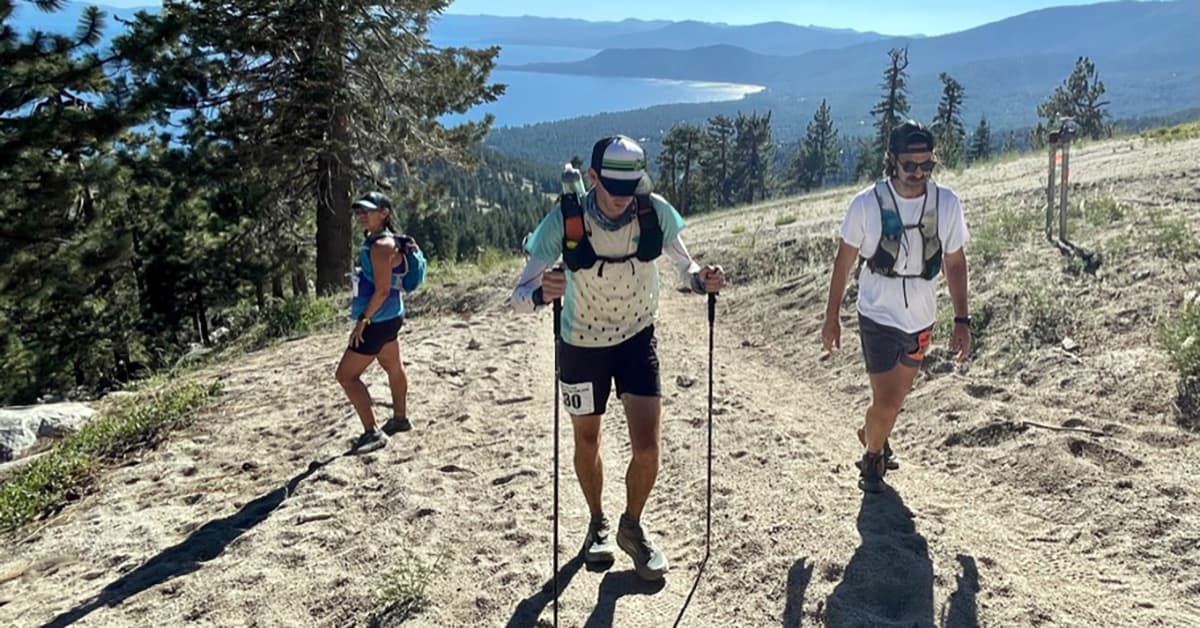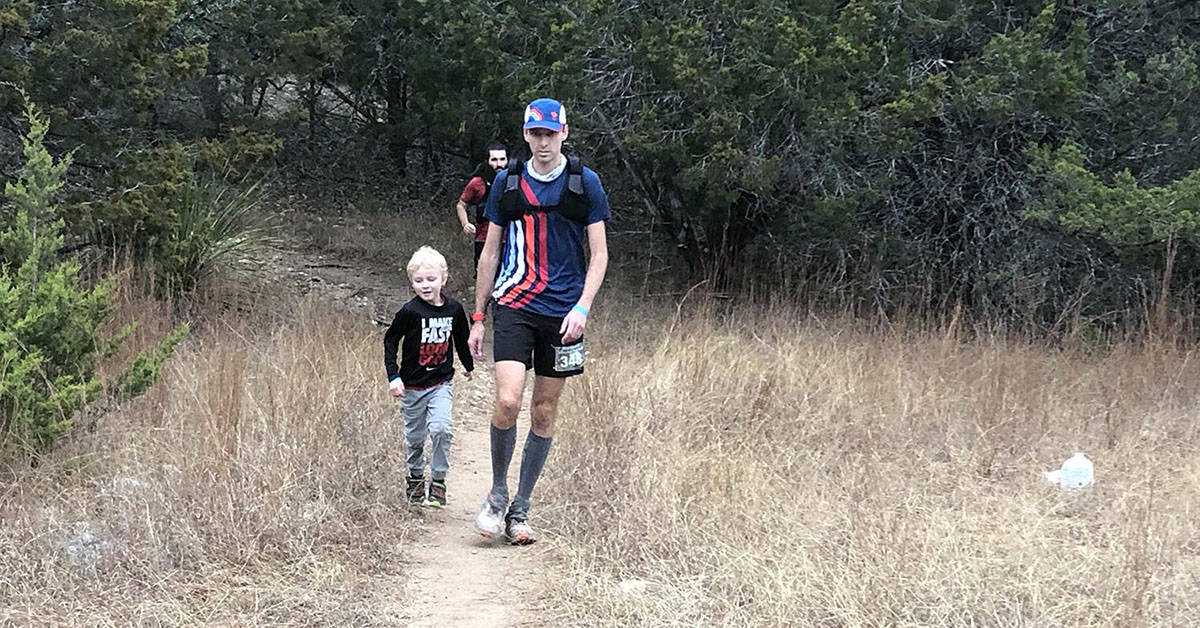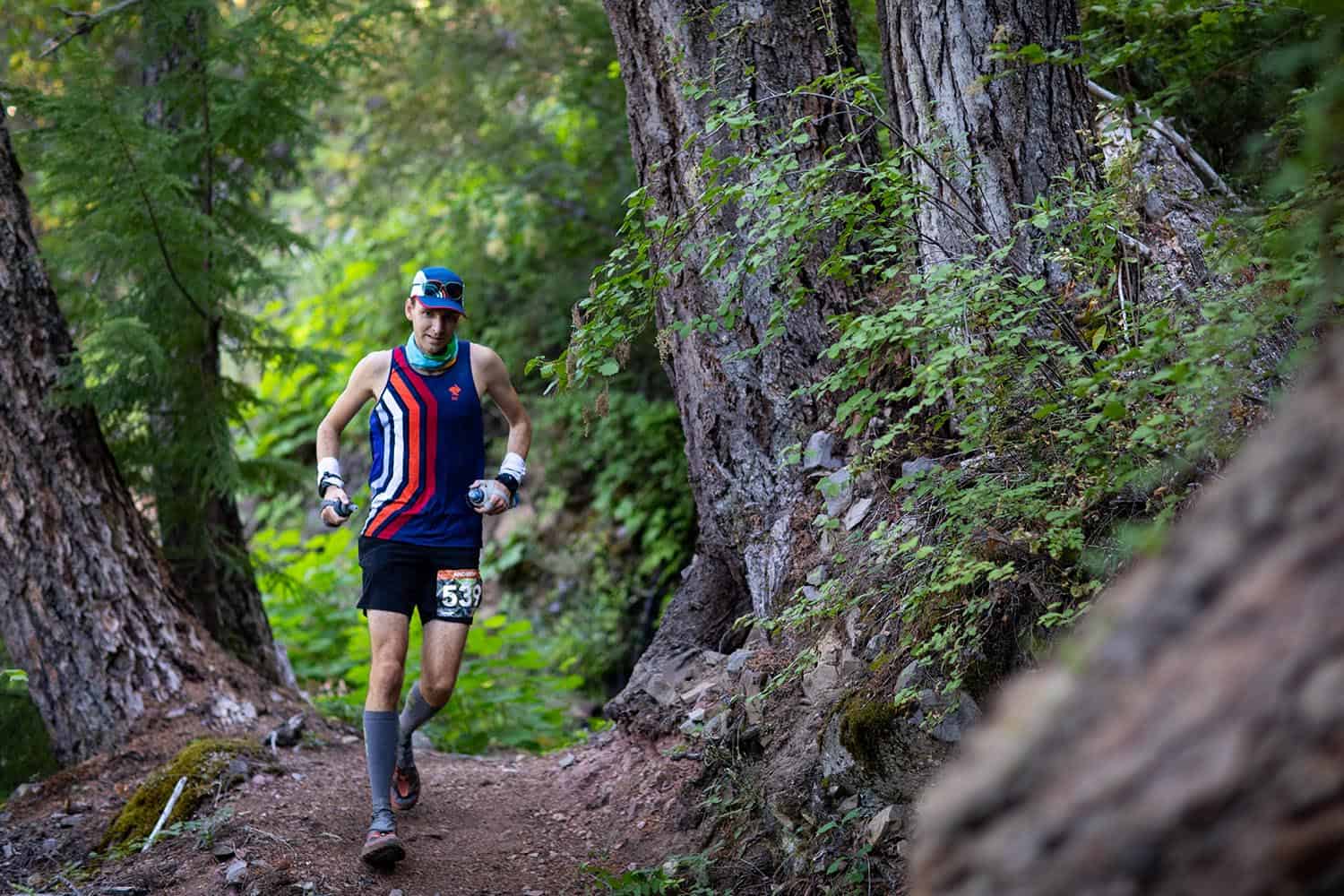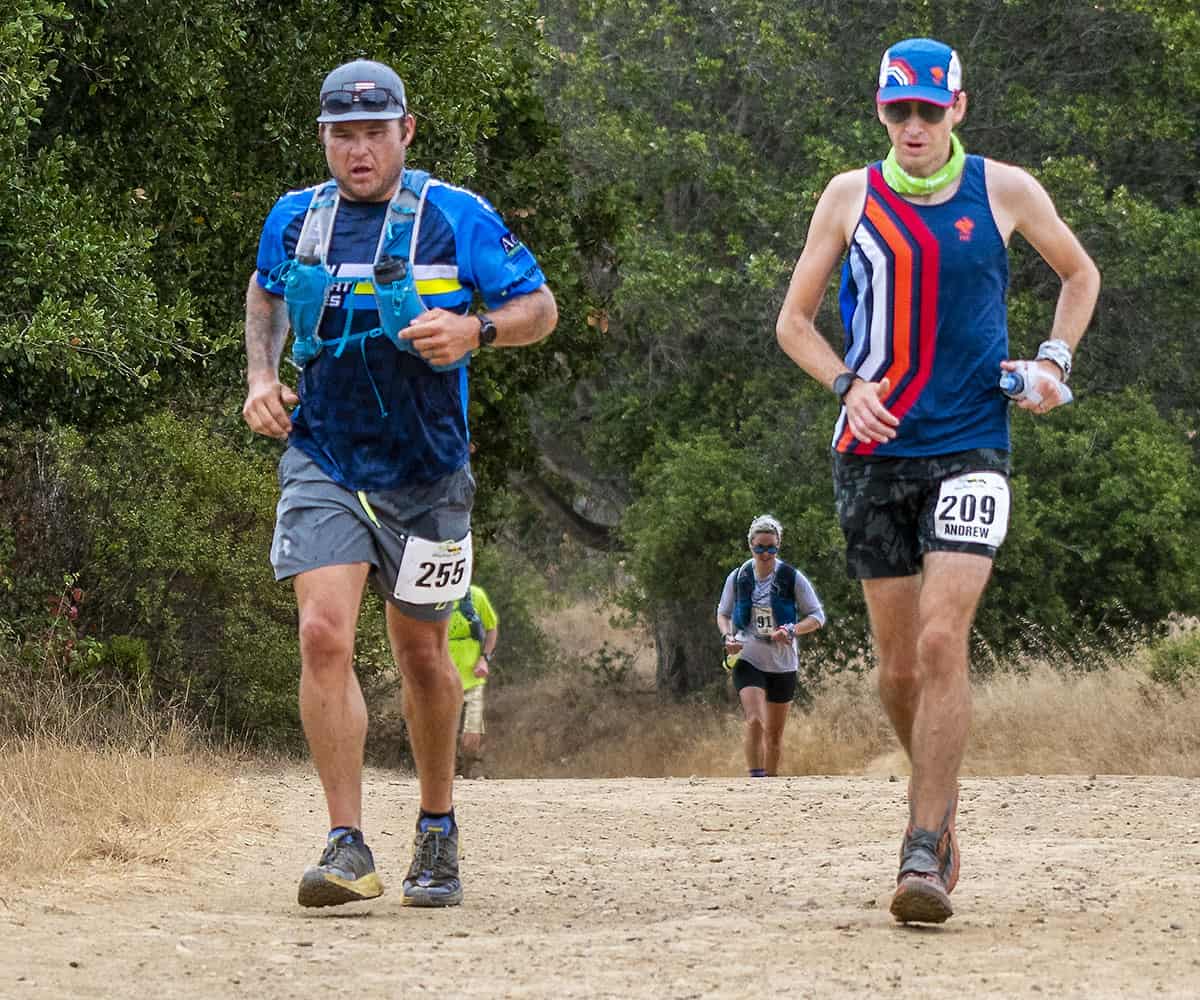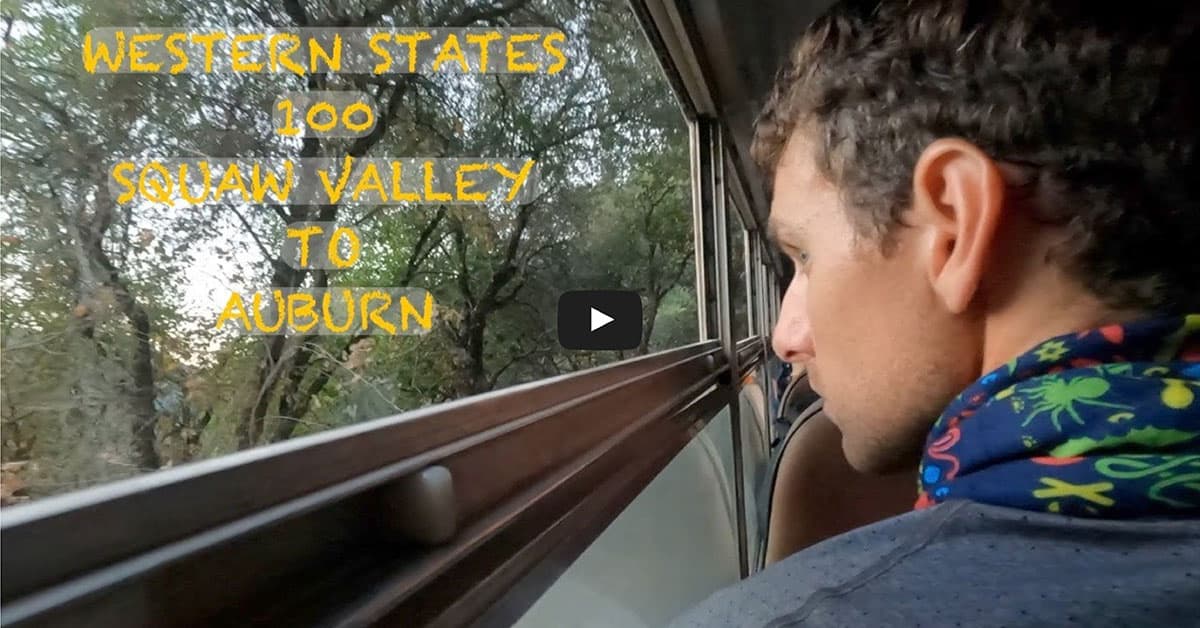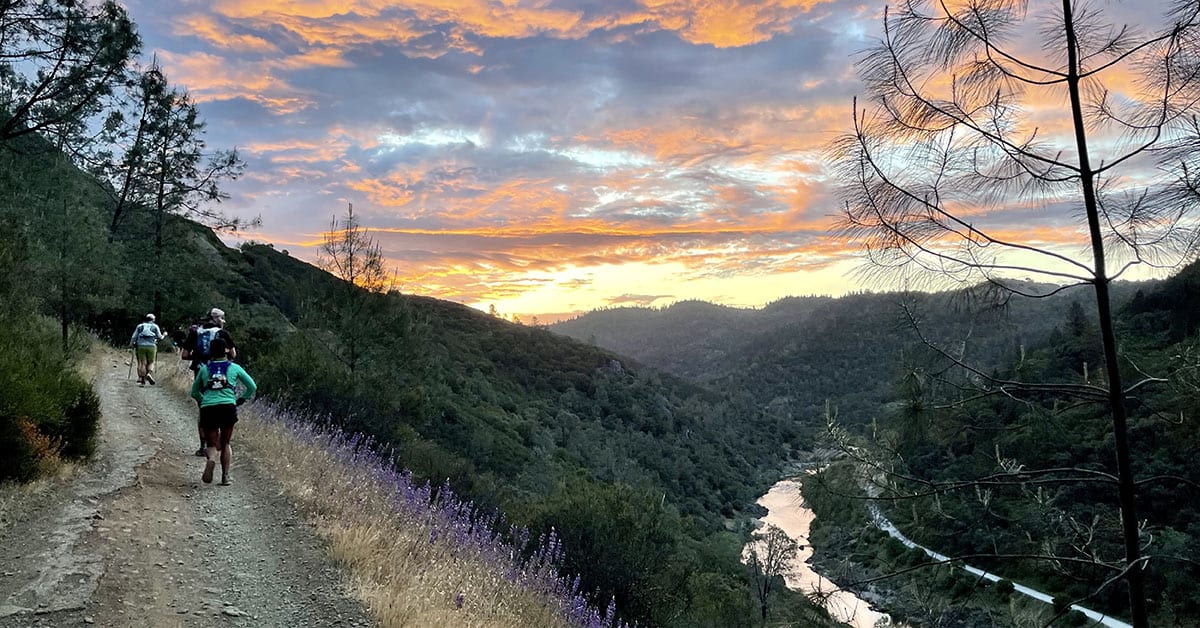My Running of the 2014 Pinhoti 100 Mile Endurance Run
Race: Pinhoti 100 Mile Endurance Run
Date: Saturday, November 1st, 2014
Location: Heflin to Sylacauga, AL
Result: 23:45:33 / 35th Overall / 32nd Age Group
Strava Link: First 72 miles, then the watch died, here.
Pinhoti 100 is a point-to-point endurance run taking place the first weekend of November every year. The course goes through the Talladega National Forest in Alabama. The race starts at the Pine Glen Campground just outside Heflin, travels 100.59 miles with over 28,000 feet of elevation change, and ends in Sylacauga.
For me, the 2014 Pinhoti 100 represented my third 100-mile run in 12 months. This sequence of 100-milers started with my first 100-mile attempt at the 2013 Pinhoti 100 (28:08), then featured the 2014 Burning River 100 (24:19) in August 2014, and concluded with this return visit to Pinhoti. This race was a true testament to just how much I have improved over a year.
Favorite part of the Pinhoti 100
My favorite part of the Pinhoti 100 mile endurance run has to be the beauty of the course. Even though it is late in the season, many trees are still showing their bright fall colors. I also really enjoy the elevation profile of this course. The opening miles are full of runnable single-track trails. Then the course profile changes to several long and steep climbs with fast descents. And finally, the course rewards your strenuous efforts through the middle of the race with a closing section of runnable trails and dirt roads to bring you to the finish line.
Least favorite part of the Pinhoti 100
My least favorite part of the Pinhoti 100 course would have to be the wild and ever-changing weather conditions. The day started at 30 degrees which feels even colder when you are out in the middle of the forest. The high for the day was in the 50s, which is an excellent running temperature. However, the humidity tends to set in, which leaves you feeling cold and damp.
When the sun goes down, temperatures quickly fall again into the 30s. There are several sections of the race where you are on ridges or open roads with a headwind, creating temperatures in the 20s or below with the wind chill. The cold and wind almost resulted in a DNF for me at the 2013 Pinhoti 100. I was far better prepared for the conditions this year!
Highlights of your 2014 Pinhoti 100 – How did the race go down for you?
The first 27 miles of the race (Start to Lake Morgan) went well for me. I covered these opening miles at or near an 18 to 20 hour projected race time. I was feeling powerful and felt confident in achieving my goal of a sub-24 hour finish.
There were some rough patches through the middle and end of the race, but I was proud of myself and Nicole for battling through and against the adversity to come out on top of my goal.
I think that knowing the course and establishing goals for each section of the course, are the two factors that allowed me to have a much better go of it at the 2014 Pinhoti 100.
Start to Blue Mountain (miles 0-35).
Within the first quarter-mile of the race, the course goes from a wide dirt road to a single-track trail. Knowing this and my goal to run sub-24 hours meant that I elected to start at a quicker pace to avoid getting bottled up behind a bunch of runners and end up way off my target pace.
Even after the opening few miles, I continued to run hard but more at a rate that I felt I could sustain into at least the middle of the race. These first 35-miles are overall reasonably flat with no significant climbs or technical portions of terrain to maneuver through.
However, the trail from Lake Morgan to Blue Mountain is 7.5 miles long. For me, these long stretches between aid stations always wreak havoc on me. To make matters worse, I covered this entire section alone, not seeing a single runner along the way. I longed for even just one person to keep me company.
I have found that the best way to get through these long sections is to pay extra close attention to my calorie and fluid consumption, and continually find ways to be positive.
Blue Mountain to Clairmont Gap (miles 34-60).
The Blue Mountain aid station to the top of Bald Rock is 5.78 miles long and consists of around 1400 feet of vertical gain. Much of this section of the trail is a hike. In 2013, I struggled with low energy levels through this section.
Over the past year, I spent more time on long technical climbs and learned to conserve my energy better. By taking it easier going up Bald Rock, I could come into the next aid station (mile 40.93) in a better place, both physically and mentally.
Despite dealing with some cramping in my quads, my more positive mindset allowed me to work harder on the other side of Bald Rock to stay ahead of a sub-24 hour pace.
The stretch of trail from Bald Rock to Silent Trail (mile 45.25) is a mixture of highly technical downhill, paved roads, and dirt roads.
At the Silent Trail aid station in 2013, I refused warm clothes from my crew, feeling that it was still really warm. I then nearly froze as I made my way across the open ridge road/trail from Adams Gap to Clairmont Gap.
This year, I was prepared for it, listened to my crew for the weather forecast, and got to Clairmont Gap over an hour faster than in 2013.
Clairmont Gap to Porters Gap (miles 60-69).
This is the beginning of the challenging miles of the Pinhoti 100 course because your legs are now tired from all the miles already completed, it is getting dark and cold again, and you now have to traverse several short but steep climbs and descents and the significant climb up to Pinnacle Mountain.
The first two miles of the course from Clairmont Gap to Chandler Springs are still on a dirt road, but the road becomes a little rockier and has a slight incline to it. For me, less manageable to run in the dark. So I elected to hike the majority of this opening two miles.
After these two miles, I made the left-hand turn back onto the single-track trail and began to run again at a very steady pace. The rest of the way into Chandler Springs was downhill, and despite being dark, I found it very manageable to run quickly.
After the Chandler Springs aid station (mile 65.44), I once again found that running this course a year ago proved to be of benefit to me. Leaving this aid station, you are hit with a steep mile or so incline. Then, the course turns back downhill all the way into Porter’s Gap aid station (mile 68). I relaxed on the climb and took my time before getting back into a good running stride on the downhill.
It was along this stretch of trail that I could tell the temperature was beginning to significantly drop. The forecast was predicting lows in the high 20’s/low 30’s at night. My core and legs were warm, but my face was taking a beating from the cold wind. I kept pulling my Buff up over my mouth to generate warm air and thaw out my face.
My pace was very steady when the course allowed me to run, and I entered Porters Gap (mile 68.78) at a race time of 15:10, still on a 22-hour pace.
I left the Porters Gap station just a few minutes after arriving and was back out on the trail, headed towards the last series of significant climbs for the day.
Porters Gap to Pinnacle Mountain (miles 69-74).
The opening section of the trail to the base of Pinnacle Mountain is very runnable, so I moved along quickly. My strategy for this last difficult stretch was the same as the climb up Bald Rock earlier in the day, which was to go at whatever pace was necessary to get through it. Even if that was super slow!
The climb up to the Pinnacle aid station is a series of switchbacks that last year seemed to go on forever.
This year, as I hiked up the switchbacks, I gazed up into the sky to see the 3/4 moon illuminating the night and joked with two nearby runners that “the bright light up there,” pointing to the moon, “was where we were headed.” While I had lost more time on the climb, I knew that things were going to get easier from the top all the way into the finish.
Pinnacle Mountain to Bulls Gap (miles 74-85)
Last year, it had taken me over 20 hours to reach the Pinnacle Mountain aid station, and I was so out of it both physically and mentally. My focus was so poor, in fact, that I ended up losing track of course details.
This mental fog left me with no recollection of landmarks from mile 74 to 83 to call upon during the race. Because of this, as I traversed this section of the trail now, I actually had the Wormy’s Pulpit, and Bulls Gap aid stations reversed in my head. Nevertheless, I was moving well and continued to stay focused on following the course markings.
From Wormy’s Pulpit (mile 79), the course featured a long inclined dirt road. I kept telling myself to just push up the road for a few miles, and then I would be headed down the side of the mountain to Bulls Gap, to Nicole, and the very easy last 15 miles of the course. However, the dirt road was so straight, uphill, and dark that it was a mind-bender trying to stay positive. I was all by myself, and I kept looking back to see if it was worth slowing down to run with someone else, but no one was within sight.
I remember at 2:30 AM, somewhere along this open road, feeling so distraught about how long this section was taking me. I also could not remember if I would be looking for a left or a right turn in the trail to go down the mountain. The trail markings were every quarter mile or so, and in between each marker, I got the overwhelming feeling that I was going to miss the turn or, worse yet, that I was already off course.
Then finally, up the road, about 100 yards, came the reflection of the Pinhoti 100 sign, and I breathed a sigh of relief that I made it off this crazy dirt road!
With that challenging dirt road now behind me, I focused on running down the trail to make up some time coming into the Bulls Gap aid station (mile 85.6). Then, my vision started to fail me.
I have read horror stories of runners losing their vision in the late stages of races, usually due to being awake for long hours or dehydration, but this was different. I turned my headlamp off and looked to the sky, which I could see was full of stars. I then turned my headlamp back on, and my vision decreased again immediately. While this presented itself as a severe issue, I knew my only choice was to get to the next aid station before trying to figure out exactly what was going on. I pushed on with just my handheld flashlight shining as far down the trail ahead of me as possible.
Bulls Gap (mile 85), I cannot see!
I managed to get down the side of the mountain and into Bulls Gap (mile 85.63) at a race time of 20:04, just 22 minutes ahead of a 24-hour pace. However, I now had to deal with whatever was going on with my vision.
I found myself stumbling through the aid station to the car with Nicole, covering my eyes the whole way like the sun was shining directly onto my face. I climbed into the car to get warm and changed clothes, all the while drinking coke and water to try to rectify the issue.
Nicole then looked at my eyes to see that they were extremely bloodshot. I thought, well, that explains why I cannot see, but how do I fix it. We decided to see if anyone at the aid station had eye drops, so I climbed out of the car, and everything in my legs locked up.
Now I was standing on the side of the car, unable to see and not able to move. I thought, well shit, this isn’t good at all. But I somehow managed to hobble over to the aid station tent and fall into a chair. Surprisingly someone had eye drops on them!
At this point, several volunteers had surrounded me, and all I was thinking about was getting out of the aid station so that I could still break 24-hours. With the drops in my eyes, I jumped out of the chair, ready to go. Nicole asked me if the drops had helped, to which I replied,” absolutely, let’s go!!!”
The reality was that there was no change in my vision, but I knew I had to get out of there! I began hobbling down the dirt road repeating to myself repeatedly, “you got this, you need to run, you got this, you need to run!”
About 100 yards out of the aid station, I broke into a hard run and laughed aloud at the pain that shot up and down my legs. Thankfully the final 15 miles were on dirt or paved road.
Bulls Gap to the Watershed (miles 85-95)
It was a total of 5.58 miles from Rocky Mt. Church to the final aid station, the Watershed (mile 95.21). The majority of this section was still on the dirt road with rolling hills, and I tried to stay focused on more running than walking, consuming a gel every 30 minutes, and taking in fluids.
With about a mile or so to go before the Watershed aid station, the course left the dirt road for a fairly wide trail. The route then cut through a grassy field that was completely iced over from the cold temperatures.
The next thing I knew, I saw the bright light of the bonfire at the aid station ahead of me. To the amazement of the volunteers, I came running into the aid station, yelling my number, and ran straight out the other side. Hello Watershed, and goodbye, I was on my way to the finish!
Watershed to the Finish (miles 95-100)
My feet hit the pavement in Sylacauga at 6:13 AM, 23:13 race time, and about three miles to go to the finish. I thought to myself that there was no way I was going to fail now!
As I ran up the street, I decided I had better switch my headlamp back on so that any oncoming cars would see me. The light from my headlamp, coupled with the glow of the street lights, took my vision down to less than 30 percent. Everything was blurry, and I was just hoping that I was running on the side of the road and not straight down the middle. I could make out telephone poles and other objects that would typically be on the side, so I just hung tight to these objects and focused on still feeling a hard surface under my feet.
I got into a solid routine of running hard for five minutes, then walking briskly for two minutes. I kept this up to the final left-hand turn in the street before entering the stadium for the finish line.
As I approached the stadium gates, I remembered that I had stuffed my race number belt into my pack. It had kept riding up on my waist and getting tangled in all the warm layers that I had on. I reached into my hydration pack, pulled out the belt, and went to clip it around my waist.
Despite hearing it clip, it fell to the pavement, and I had to turn around and walk back for it. A lady was standing at the gate, and she said to me,” I think you can just carry it in.” To which I replied,” yeah, I guess I better; it’s not the only thing that’s broken right now.” We both laughed, and I walked through the gate.
From there, I stepped onto the track and walked around to the finish line. It was a feeling of pure joy and absolute exhaustion as I crossed the finish line in a time of 23:45:33!
What Allowed Me to Break 24-Hours at Pinhoti 100
After the race, I posted that Pinhoti 100 was the single most challenging effort I have ever put into something, and it was one of the most thrilling outcomes of my life! In one year, I had gone from not knowing if I would finish Pinhoti 100 to breaking 24-hours the next. I’ve been asked by many, what do you think made the most significant difference from 2013 to 2014?
1. Balanced Training and Racing.
I had run two 100 mile races coming into the 2014 Pinhoti race and a handful of 50k and 50-mile races. In addition, I had spent the entire last year focused on a balanced combination of running and strength training. My training mileage cycled between 30-70 miles per week throughout the year, with only a total of four weeks coming in above 60 miles. I incorporated 1-2 days per week of bodyweight exercises, often cutting a run a couple of miles short to free up 15-20 minutes for strength work. Lastly, I rested when my body told me to, and I scaled back at whatever short-term cost was necessary for the long-term goal.
2. Beware of the Chair.
I only sat down five times throughout the day and significantly decreased the amount of time spent in aid stations. I was in and out of 90% of the aid stations in less than five minutes. In any ultramarathon race, I had entered from 2011 to 2013; I found that I was constantly wasting too much time at aid stations and not realizing the minutes ticking away. Even at Burning River 100 just a few months before Pinhoti 100, I had several aid station stops of 20-30 minutes in length. These lengthy stops were not only a time killer, but they were also taking a severe physical toll on my body.
I also refined my use of carrying fluids, using 16-ounces flasks instead of 8-ounce flasks. This meant less frequent fill-ups of fluids, but not the heavyweight of having a full hydration pack bladder on my back. In addition, I brought more gels and snacks with me along the course, meaning less of a need to re-pack or stand at an aid station table trying to decide what to eat. When I did grab food from an aid station, I took it to go!
Finally, I only stopped for a significant amount of time when there was a real issue to address, such as blisters, changing clothes, or when my vision issues occurred late in the race.
3. Know and Experience the Course.
Having completed Pinhoti in 2013 made me realize that the course is fair, meaning that for every problematic climb or technical section, there are just as many manageable sections to run.
I used visualization techniques of how I ran the course in 2013 and inputted how I would respond this year—taking it conservatively up Bald Rock and Pinnacle and pushing the effort the first 40-miles, miles 55 to 60, and the last 15 miles. These sections were all visualized and prepared for in my head.
Lastly, knowing that mother nature would play a role in the outcome of the race as well allowed me to better prepare my crew to have the items I needed exactly when I needed them.
4. Tailwind Nutrition!
There is not much more to say, but I will. Tailwind provided me with a significant and constant source of calories that was easy on my stomach.
I am 6′ 2″‘ and 145 pounds, so there is not much in the way of fat stores for me to burn through. I require 300-350 calories per hour to maintain the level of effort expended in an ultramarathon.
Trying to consume this amount of gels or solid foods is not doable if I want to keep my stomach intact. During Pinhoti, I became addicted to the flavored versions of Tailwind and almost threw a tantrum when Nicole told me that all I had left was Tailwind’s Naked flavor!
5. Crew Support.
Nicole’s presence and the two of us just learning not to give up during these races have made a big difference in my results…
- 2013 North Face Georgia
- 2013 Pinhoti 100
- 2014 Burning River 100
…in each of these races there came a point where I wanted to quit and take the DNF.
TNF 50 in Georgia came just a few stressful weeks after my store had opened its new location. My training was poor, and my stress levels were extremely high from six straight weeks of 80 or more hours per week. I wanted to give up when I saw the 11-hour Western States 100 qualifying time slip past with 10-miles still to go. However, it was Nicole’s text message of motivation that pulled me through anyways to a 12:15 finish.
Then I ended up at the 2013 Pinhoti 100 in order to keep that two-year Western States lottery ticket alive. When I wanted to give up, Nicole got out of the car with me at mile 60 and hiked the next 5.15 miles through the night (she does not even run, let alone walk through the woods at night).
At Burning River 100, I dealt with knee pain for 90-miles. At mile 75, my knee completely locked up, and I found myself standing on a dark empty trail calling on the phone Nicole to tell her,” I quit.” She broke down what was left in the race in such a simplistic way that there was no way I could not push forward.
Finally, at this year’s Pinhoti 100, with the help of Nicole, I had that break-through race where I not only knew I was going to finish but that I was going to break 24-hours. When energy was low from Lake Morgan to Bald Rock, it was communication with Nicole that let her know I needed her support. She quickly packed up everything and altered her crew stops to get me at an earlier spot. Her flexibility was a tremendous help in righting the ship and keeping me going to achieve my goals.
A Special Thank You
A special thank you goes out to Eagle Endurance for making it possible to do all the races that I did in 2014.
Thank you to Tailwind Nutrition for the personal notes throughout the last six months of my Tailwind Challenge.
Thank you to Dan Matena, sales rep, for the extra supply of Huma Chia Strawberry Gels.
Finally, thank you to Jarrod Fritz of Defined Therapeutic Massage for not only the massages in the last couple of weeks before the race but for the Rock-Tape application that proved to make a world of difference in keeping my Achilles Tendon from bothering me throughout the entire race.






